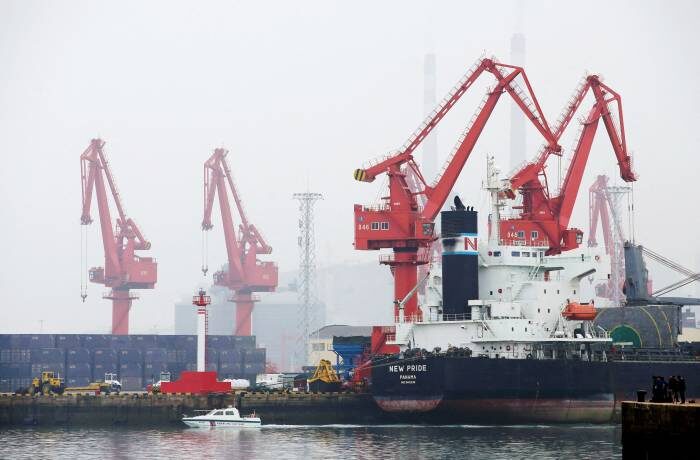By News.Az
Russia continues to play a key role in the global oil products market, actively expanding its exports to the Asian region. In July 2024, there was a significant increase in the export of Russian fuel oil and vacuum gas oil (VGO) by sea, made possible by the completion of seasonal maintenance at domestic refineries. The volume of shipments reached an impressive 4.05 million tons, which is 7% more than in the previous month. The main importers of Russian fuel were China and Saudi Arabia, highlighting their growing demand for Russian energy resources.
China, striving to ensure the stability of its energy reserves amid an unstable global economy, is actively increasing imports of Russian oil and petroleum products. Direct shipments of fuel oil and VGO to China in July 2024 increased by 18% compared to June , reaching 0.7 million tons. The growth of these supplies is explained by several factors. First, China continues to develop its refining industry, using straight-run fuel oil and VGO for raw material processing. By combining these products with Urals crude, China improves the efficiency of its refineries, allowing the country not only to meet domestic demand for petroleum products but also to maintain competitive positions in global markets.
Secondly, in the context of the global energy crisis caused by sanctions and political instability, China seeks to diversify its energy sources, viewing Russia as a reliable partner. China’s strategy to increase purchases of Russian oil and petroleum products can be seen as part of a long-term plan to ensure the country’s energy security.
Saudi Arabia, the world’s largest oil exporter, also increased its purchases of Russian fuel oil in July 2024. The volume of shipments reached 700,000 tons, almost double that of June . Most of this fuel was intended for power plants operating at full capacity during the hot summer period when electricity consumption peaks. In Saudi Arabia, summer is traditionally accompanied by a sharp increase in electricity consumption, requiring additional fuel volumes to ensure the uninterrupted operation of energy facilities.
It is worth noting that the increase in Saudi Arabia’s purchases of Russian oil and petroleum products can be seen as part of a broader strategy of cooperation between the two largest oil exporters. Despite competition in the global oil market, Saudi Arabia and Russia demonstrate a willingness to partner in energy, which could help stabilize global oil prices.
While China and Saudi Arabia increased their purchases, the export of Russian fuel oil and VGO to India in July 2024 decreased by 7%, amounting to 48,000 tons. This decline is associated with the reorientation of India’s energy sector to other fuel sources, as well as economic and political factors affecting trade relations between the countries. Nevertheless, Russia continues to actively develop cooperation with other Asian countries. For example, exports of petroleum products to Fujairah increased from 200,000 to 320,000 tons, and to Turkey from 95,500 to 264,000 tons.

Special attention should be given to the growth of shipments to South Korea, where export volumes from Russian Pacific ports increased from 36,200 tons in June to 118,000 tons in July . This growth underscores the importance of Russian fuel for Asian markets and highlights the expanding geography of Russian petroleum product exports.
Geopolitical conditions and risks associated with the security of maritime routes force Russian traders to seek alternative delivery routes for petroleum products. In July 2024, maritime exports via the Cape of Good Hope reached a record 1.1 million tons, nearly double that of June. This route is increasingly chosen by vessels seeking to avoid the Suez Canal, which has become dangerous due to the threat of attacks by Yemeni Houthis.
The bulk of the exports on this route consisted of naphtha—830,000 tons. Additionally, shipments of fuel oil loaded at the Baltic ports of Ust-Luga and Vysotsk, as well as low-sulfur diesel fuel from the port of Primorsk, were directed through the Cape of Good Hope. These petroleum products were destined for Asian countries such as Singapore, Taiwan, India, and China, confirming the significance of the Asian market for Russia.
Due to the increased number of attacks on tankers in the Red Sea, Russian traders began redirecting shipments around Africa at the end of 2023. In 2024, at least three tankers carrying Russian petroleum products were attacked, leading to significant delays and additional costs. Among the affected was the Panama-flagged M/T Wind tanker in May and the Liberia-flagged Chios Lion tanker, which was loaded with about 90,000 tons of fuel oil in the Black Sea port of Tuapse in July . The Chios Lion is still drifting in the Suez Canal, demonstrating the complexity and danger of maritime transportation in this region.
Thus, despite all the difficulties and challenges, Russia continues to actively develop the export of its petroleum products, finding new markets and routes for shipments. The strengthening of trade ties with Asian countries such as China and Saudi Arabia demonstrates the flexibility and adaptability of Russia’s energy strategy in a globally uncertain environment.













